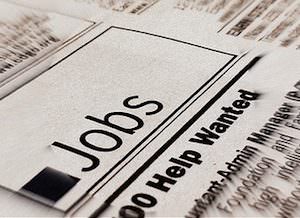Don’t Be Fooled by the October Unemployment Numbers
Despite 9 million Americans remaining out of work, economists hailed the drop of the U.S. unemployment rate to its lowest level since 2008 on Friday. Photo by woodleywonderworks (CC BY 2.0)
Photo by woodleywonderworks (CC BY 2.0)
Photo by woodleywonderworks (CC BY 2.0)
Despite 9 million Americans remaining out of work, economists hailed the drop of the U.S. unemployment rate to its lowest level since 2008 on Friday.
The Bureau of Labor Statistics reported that the unemployment rate fell to 5.8 percent after employers added 214,000 jobs in October. The average monthly gain throughout the past year was 222,000. The BLS said the industries that added the most jobs were “food services and drinking places, retail trade, and health care.”
Guardian U.S. finance and economics editor Heidi Moore pointed to analysts who disputed the cheery view of the report. The National Women’s Law Center, she wrote on Friday, “objected that most of the gains… were in low-paying minimum-wage jobs.”
Moore parsed the report as follows:
While the so-called topline numbers – the number of jobs added and the unemployment rate–- are often cited in discussions, they have their flaws. The jobless rate, for instance, has been dropping in part because it only measures people who have been actively looking for jobs; when people stop looking, they are no longer counted as “unemployed” according to the government figures. In addition, the number of jobs added is frequently revised, often by large margin; the BLS reserves a margin of error of 100,000 jobs.
One alternative measure Moore pointed out is “discouraged workers.” These are people who have given up looking for jobs because they think there are none available. A whopping 770,000 Americans fit that description. The number is essentially unchanged from the same time last year.
One of these telling statistics is the “U-6 unemployment rate,” a more expansive measure that counts the “total unemployed, plus all persons marginally attached to the labor force, plus total employed part time for economic reasons, as a percent of the civilian labor force.” That means all people who are unemployed as well as those who have taken jobs they don’t want out of financial desperation.
That U-6 number remains elevated, suggesting that 11.5% of the country is unemployed – in contrast to the milder 5.8% top-line unemployment rate. The U-6 rate has dropped in October, however, from 11.8% in September.
Additionally, at 10.9 percent, black unemployment remains more than twice the rate of white Americans.
Read more here.
— Posted by Alexander Reed Kelly
Your support matters…Independent journalism is under threat and overshadowed by heavily funded mainstream media.
You can help level the playing field. Become a member.
Your tax-deductible contribution keeps us digging beneath the headlines to give you thought-provoking, investigative reporting and analysis that unearths what's really happening- without compromise.
Give today to support our courageous, independent journalists.





You need to be a supporter to comment.
There are currently no responses to this article.
Be the first to respond.